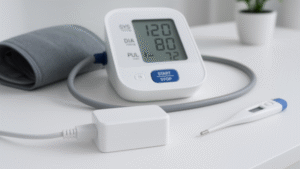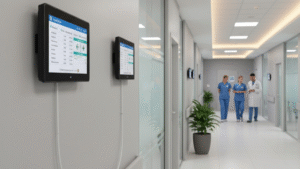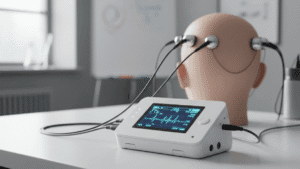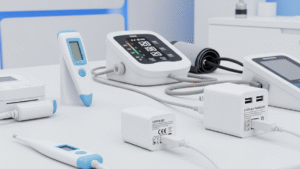LED lighting has become a standard choice in homes, offices, and commercial spaces. Compared to traditional incandescent or fluorescent lights, LEDs use less energy, produce less heat, and last much longer. Many people, however, are unaware that the performance and lifespan of an LED light heavily depend on a small but crucial component called the LED driver. This device regulates the electricity supplied to the LED, ensuring it operates safely, steadily, and efficiently.
In this guide, we will explore the role of LED driver power supplies in indoor lighting. We will explain how LED lights work, how drivers affect their performance, and provide practical tips for selecting the right lights and drivers for your home or office. By understanding these concepts, you can enjoy lighting that is comfortable, efficient, and long-lasting.
Understanding LED Lights
LED, or Light Emitting Diode, is a semiconductor that produces light when electricity flows through it. Unlike traditional bulbs, LEDs generate minimal heat and consume much less energy, making them an ideal choice for modern indoor lighting.
A typical indoor LED fixture is made up of several key components. The LED chips generate the light, while a heat sink, usually made of aluminum, helps dissipate heat to protect the LEDs. A cover or diffuser spreads the light evenly across the room, reducing glare. Finally, the LED driver supplies regulated power to the LEDs to ensure they function correctly.
Indoor LED lighting comes in various types, each suited for different spaces. In homes, common fixtures include ceiling lights, table lamps, floor lamps, and recessed lights. Offices often use panel lights, tube lights, or track lights for consistent illumination across workspaces. Each fixture type has specific power requirements, and using the wrong driver can cause flickering, uneven brightness, or shortened lifespan.
High-quality LED lights can last anywhere from 25,000 to 50,000 hours. Cheaper alternatives may fail much sooner, making it essential to pair your lights with a reliable LED driver. A proper driver can enhance light stability, reduce flicker, and maximize the lifespan of the fixture.
What is an LED Driver Power Supply?
An LED driver power supply is an electronic device that converts and regulates electricity for LED lights. The main function of a driver is to provide a stable current or voltage to the LED. This is crucial because LEDs are sensitive to fluctuations in power, and any sudden change can damage the light or reduce its lifespan.
There are two main types of LED drivers: constant current and constant voltage. Constant current drivers maintain a steady flow of current, making them ideal for most LED fixtures that require consistent current. Constant voltage drivers, on the other hand, provide a stable voltage, which is commonly used in LED strips or low-voltage indoor lights.
Some LED drivers also offer dimming capabilities. This allows users to adjust brightness using switches, wall dimmers, or smart control systems. A good driver not only powers the LEDs but also protects them from short circuits, overvoltage, and other electrical issues.
Without the correct driver, LED lights may flicker, appear dim, or fail prematurely. For example, a ceiling light in a living room relies on a properly matched driver to provide consistent light throughout the room. This small device plays a critical role in ensuring the light functions reliably and safely.
How LED Drivers Affect LED Lights
The relationship between an LED driver and an LED fixture is vital for proper performance. A high-quality driver ensures the LEDs operate within safe electrical limits. This directly impacts brightness, stability, and lifespan.
For instance, a living room ceiling light with a low-quality driver may start flickering within months, which can be both annoying and harmful to the eyes. In an office, flickering lights can cause headaches, eye strain, and reduced productivity. On the other hand, a stable, well-designed driver delivers smooth, continuous light, providing comfort and reliability.
Different indoor lighting applications require different types of drivers. High-power ceiling lights or office panel lights need drivers with higher current ratings. LED strips for under-cabinet or decorative lighting often require constant voltage drivers. Choosing the correct driver for each fixture is essential to ensure optimal performance and safety.
Technical Insights of LED Drivers
Most indoor LED drivers use switch-mode power supply technology (SMPS). This design converts mains electricity efficiently into a stable current suitable for LEDs. SMPS drivers are compact and can fit into modern fixtures without adding bulk.
Constant current and constant voltage designs serve different needs. Constant current drivers are ideal for LED modules that require precise control over current, such as ceiling lights and panel fixtures. Constant voltage drivers are better suited for LED strips or flexible lighting solutions.
Dimming technology is also an important aspect of LED drivers. Pulse-width modulation (PWM) dimming works by turning the LED on and off very quickly. This rapid switching changes the perceived brightness smoothly without affecting the color of the light. Analog dimming, on the other hand, reduces the voltage supplied to the LED, dimming the light simply and effectively.
Safety features in LED drivers are critical. Most quality drivers include protection against overvoltage, overcurrent, and short circuits. Some also offer power factor correction, which improves energy efficiency, particularly in spaces with many fixtures. Low standby power consumption further reduces energy waste when the lights are turned off.
High-power indoor lights, such as large ceiling fixtures or office panels, require carefully designed drivers. Poorly designed drivers can overheat, flicker, or shorten the lifespan of the LEDs. Reliable drivers ensure long-term performance, stable light output, and energy efficiency.

Indoor Lighting Applications and Driver Matching
In homes, LED lights are used in living rooms, bedrooms, kitchens, and study areas. Each room has different lighting needs. A living room might require warm, dimmable lights to create a cozy atmosphere, while a kitchen benefits from bright, neutral light for visibility during cooking. Study areas need clear, focused lighting to help with reading and work. Selecting the right driver ensures the LED operates safely at the correct brightness and provides a comfortable environment.
In offices, panel lights, downlights, and track lights provide even illumination across workspaces. Properly matched drivers prevent flickering, reduce eye strain, and improve employee productivity. In commercial spaces such as shops or restaurants, flicker-free, energy-efficient lighting enhances the overall customer experience. Dimmable drivers can also adjust brightness for different times of day or ambiance.
For example, one office replaced old fluorescent tube lights with LED panels. By using constant current drivers with built-in dimming, the lights provided smooth, adjustable illumination. The office reduced energy consumption and maintenance costs while improving comfort for staff.

Guide to Choosing LED Lights and Drivers
When choosing LED lights, consider brightness, color temperature, lifespan, and power consumption. For warm, cozy rooms such as living rooms or bedrooms, lights with a color temperature of 2700K to 3000K are ideal. For kitchens, study rooms, or office areas, lights with a neutral color temperature of 4000K to 5000K provide clear, comfortable illumination.
Selecting the right driver is equally important. Constant current drivers are suitable for ceiling modules and panel lights, while constant voltage drivers are better for LED strips or low-voltage decorative lighting. Always check that the driver’s current and voltage ratings meet or slightly exceed the LED’s requirements.
Safety certifications, such as UL, CE, or RoHS, indicate that the product has been tested for reliability and safety. Dimmable drivers are essential if you want to control brightness in living rooms, bedrooms, or office spaces. While higher-quality drivers may cost more initially, they ensure the lights last longer and perform better, saving money over time.
Common Problems and Solutions
Flickering is one of the most common issues in indoor LED lighting. It usually occurs when the driver does not match the LED fixture or when the electricity is unstable. Using a properly rated driver can eliminate flicker and improve light stability.
Another common problem is reduced LED lifespan. Overheating or weak drivers can shorten the light’s life. Ensuring good heat dissipation and selecting compatible drivers can greatly extend the duration of your LED lights.
Dimming issues may also arise. Some dimmers are not compatible with certain LED drivers, causing flicker or uneven dimming. Using LED-compatible dimmers or smart dimming systems ensures a smooth, adjustable lighting experience.
Recommended power supply: Our Product has 3 models for this LED lighting they are UEL024LCP, UEL036LCP, and UEL060LCP. These three models are currently the most popular among customers. If you are considering others, you can consult online.
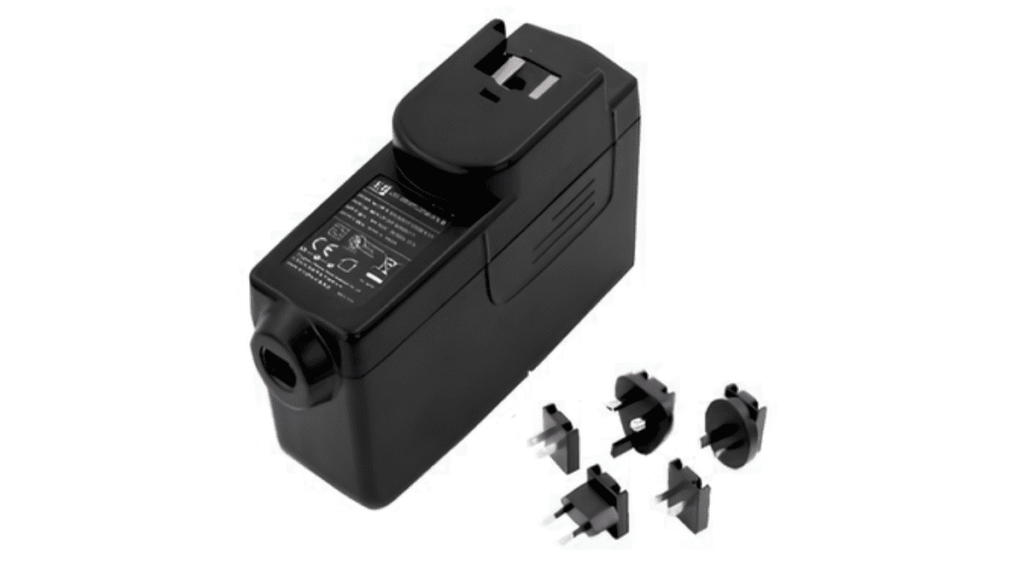
Conclusion
The LED driver power supply plays a crucial role in indoor lighting. It controls the flow of electricity, protects the LEDs, and ensures stable, flicker-free illumination. Choosing the right LED light and driver combination can improve longevity, brightness, and energy efficiency.
As LED technology continues to advance, features such as smart dimming, color tuning, and energy monitoring will become increasingly common in homes and offices. Investing in high-quality LEDs and drivers today prepares your space for a more comfortable, efficient, and adaptable lighting environment.
By understanding the relationship between LEDs and their drivers, users can enjoy long-lasting, reliable, and comfortable lighting in every room.


